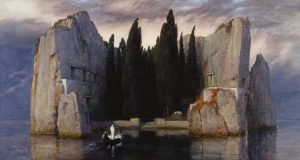Three Truths
The Three Truths | Antonio Luna
A work started in 1990, fueled by a passion for German culture born among the university desks: this is the genesis of "The Three Truths", a historical psychological thriller written with care and dedication by Antonio Luna.
The timelines of "The Three Truths"
A well-structured novel, whose solid plot is reinforced by historical, political and sociological research: through the pages of "The Three Truths" we see the rise of the Nazi Party in Germany in the 1930s and the desperate and courageous attempts of those Germans who tried to fight it.
The book develops on different temporal lines, linked with ingenuity through the thread of narration.
Starting in 2002, Johannes Andreas, psychotherapist and university lecturer in Basel, shows the results achieved with Peter Mercier, his patient suffering from severe post-traumatic stress. Through therapy, Mercier's mind brings to light a chronicle of 1934 still shrouded in mystery, although at the time it had been rapidly closed by the Nazi government, for underlying political reasons.
It was on 2 April 1934, when the bodies of the well-known director Albrecht Krakauer and his psychotherapist Bernhard Morden were found near Köpenick Castle.

It will be necessary to wait until 1968 because Fritz Mond, also a director and friend of Albrecht Krakauer, began to tell his own version of the facts about a case that was decidedly too quickly closed.
During a conference in Bonn, dedicated to her colleague who died tragically at Köpenick Castle, Fritz Mond will decide to rehabilitate the figure of Krakauer, defined by the Nazi government as subversive and mentally ill.
He told about his stay in Köpenick in 1934, summoned by the police and the Nazi Party as a suspect and informed man, and then went back to 1921, when he met Krakauer, with whom he immediately established a deep bond of friendship, which also involved Mond's wife, Petra Von Tauber.
What will come out of Bonn's conference will be destined to make people talk about themselves for a long time, in a world such as German cinema, unprepared in the face of such revelations.
The physical spectrum is structured in three dimensions: x, y, z, i. e. longitude, latitude, depth. The psychic space is structured on three truths: x, y, z, that is violence, deception, passion. With them, reality defines man.
The right alternation of times
Attentive, readers accustomed to the linearity of the story! Antonio Luna manages to unravel a dense plot through a dilated time span:"The three truths" develops the Krakauer case on three temporal lines, even twenty or thirty years apart, but manages to maintain a well studied and coherent logic, through the short chapters from which it is composed.
ANCHANCE LAWS:"Central Park" of Guillaume Musso
Although alternating years and events, each chapter always delves into new elements that gradually enrich the knowledge of Albrecht Krakauer and Fritz Mond.
Once familiar with this type of structure, the reader can only surrender in front of the narrative force of the novel and the passion with which Antonio Luna wrote the story.
The reader will find himself increasingly involved and impatient to discover what really happened in that fateful April 2,1934, when Krakauer and his psychotherapist found death in a mysterious way.
The murder of the German director, however, is only the tip of the iceberg, the culmination of a story that has deep roots, involving Germany in the 1930s, when Nazism came to power through violent and pounding propaganda.
Albrecht Krakauer will turn out to be that heroic and even a bit romantic figure of the artist endowed with a great intellect and extravagant behaviour, who will never bow to the Nazi danger, even at the cost of being arrested several times, until the tragic epilogue of Köpenick.
On the other hand, instead, his friend Fritz Mond will represent that part of the German population, which, despite the political ideas completely opposed to Hitler's prevailing Nazism, will never be able to express their political beliefs, trying to remain always in the second line, even to adapt and take part in political propaganda.
The mind beyond the confines of time

Each chapter of Antonio Luna's psychological yellow is pervaded by the cumbersome presence of Nazism and his violent policy, as if it were a serious and dramatic framework, but still a frame....
The three truths "that hide behind the death of Krakauer, find their foundation above all in the complex mechanisms of the human mind, where truth and lie have a very weak and easily passable boundary.
Truth is a flame that burns inside the mind and soul of every protagonist, destined to dissolve every appearance to the point of showing what is stubbornly attempted to hide.
You can run away, you can pretend nothing, but sooner or later, the Truth will knock on the door of the characters involved, to claim the space that is due to her right.
Antonio Luna's "Le tre verità" (The Three Truths) is a well-designed psychological thriller, with a coherent and carefully studied structure, which maintains the reader's high tension and attention, instilling in him the desire to know his following, still in the writing phase;"Mordere l' Anima" will in fact be the second novel of what is announced as a very important trilogy.
You can only end by saying: Good the first one!